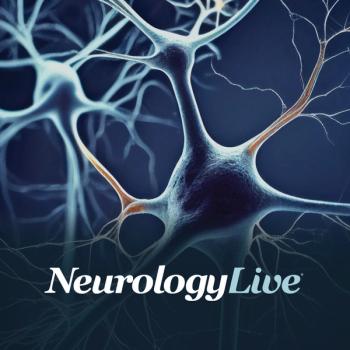
Earlier Initiation of Pimavanserin Leads to Better Improvement of Parkinson Disease Psychosis Symptoms
Key Takeaways
- Early administration of pimavanserin in PDP patients leads to higher response rates, with significant improvements observed in those treated within six months of symptom onset.
- Pimavanserin is the only FDA-approved treatment for hallucinations and delusions in PDP, emphasizing its unique role in managing these symptoms.
Clinical trial data presented at the 2025 International Congress of Parkinson’s Disease and Movement Disorders showed that pimavanserin had positive efficacy in patients showing Parkinson Disease psychosis symptoms who were treated earlier.
Neurologists recently presented positive efficacy data for two separate groups of patients with Parkinson Disease psychosis (PDP) who were treated with pimavanserin (Nuplazid; Acadia) in a phase 3 trial. The study found that those who were administered pimavanserin earlier after initial psychosis symptoms saw greater responses to the drug than those treated at least 6 or 12 months since the start of their symptoms.
The randomized, double-blind, placebo-controlled trial (ACP-103-020) consisted of 95 patients, with study authors performing a responder analysis based on the duration of PDP symptoms. Patients with moderate to severe psychotic symptoms and a score of at least 3 on the Scale for the Assessment of Positive Symptoms-Parkinson’s Disease (SAPS-PD) global item and SAPS-PD non-global item were randomized 1:1 to receive once-daily pimavanserin (34 mg) or placebo for 6 weeks. Individual responses were categorized from by SAPS-PD score point reductions of at least 1, 3, 5, 7, 10, or complete response (SAPS-PD = 0), as well as increases of at least 1 (worsening) or no change.
Led by
To date, pimavanserin is the only FDA-approved medication indicated for treatment of hallucinations and delusions associated with PDP. Data regarding the relationship between PDP symptom duration from the individual response to treatment are limited, and information from individual response date may have greater relevance to clinical practice then simply reporting mean changes from baseline.
Coming into the study, patients treated with pimavanserin had a mean age of 70.2 years, with most (96.6%) living at home. Participants exhibited psychosis symptoms warranting antipsychotic therapy, indicated by a Clinical Global Impressions–Severity (CGI-S) score above 4, Schwab & England ADL scores between 40% and 80%, and Mini-Mental State Exam scores greater than 21. A mixed-effects model for repeated measures was used to estimate least-square mean (LSM) changes in mFSQ domains throughout treatment.
Led by Virgilio G. Evidente, MD, of the Movement Disorders Center of Arizona, the analysis demonstrated notable functional improvements across multiple domains over 16 weeks. LSM changes from baseline included +8.1 (SE, 2.41; P = .0031; n = 22) in Basic ADL, +7.0 (SE, 3.00; P = .0286; n = 21) in Intermediate ADL, +13.3 (SE, 1.94; P < .0001; n = 22) in Psychological Function, +12.3 (SE, 2.07; P < .0001; n = 22) in Quality of Interaction, and +25.8 (SE, 7.52; P = .0026; n = 18) in Social Activity—the largest observed effect. These findings suggested that pimavanserin produced significant improvements in psychosocial and functional outcomes among patients with movement disorder–related psychosis.
References
1. Dashitpour K, Espay A, Tagliatti M, et al. Duration of Illness and Response to Pimavanserin in Parkinson’s Disease Psychosis: Post – Hoc Analysis of Clinical Trial Data. Presented at: 2025 MDS Congress; October 5-10; Hawaii. Abstract S675
2. Evidente VGH, Chrones L, Revankar R, Doshi D, Abler V, Rashid N. Use of the Modified Functional Status Questionnaire to Assess Functioning in Patients with Parkinson’s Disease Psychosis Treated with Pimavanserin. Presented at: ATMRD Congress; June 22-25, 2024; Washington, DC.
Newsletter
Keep your finger on the pulse of neurology—subscribe to NeurologyLive for expert interviews, new data, and breakthrough treatment updates.


































